In The Lord of the Rings, Wargs are immense creatures resembling monstrous wolves. Yet, beyond their bestial appearance, lie mysteries that remain unsolved to this day. From their place in Tolkien's writings to their role in Peter Jackson's films and the Expanded Universe, here are eight facts you (maybe) don't know about Wargs.
#8 The origin of Wargs is a (canon) mystery
Wargs are imposing wolf- or hyena-like creatures, as large as—or larger than—lions. They remain one of the greatest mysteries of Middle-earth. Living in Rhovanion (a region mostly covered in forests) and related to the Orcs of the Misty Mountains, they appear to be dark cousins of wolves, but likely more dangerous and cruel. Terrifying servants of Sauron, they appear suddenly in The Hobbit, and even Gandalf, though familiar with the secrets of this world, seems surprised by their existence.
The rest of the world doesn't seem to really care about them know, and only really discovers them in The Two Towers, during the attack of the riders of Rohan. The secrecy surrounding the origins of the Wargs is all the more astonishing since J.R.R. Tolkien, usually very precise about the origins of his creatures, does not explain them, even in The Silmarillion. Their existence therefore remains obscure, even within the lore.However, Tolkien mischievously slips in a few clues, inviting the most curious readers to investigate and uncover the true origins of the Wargs.
#7 Wargs are intelligent and conscious creatures (canon)
Although the origin of the Wargs officially remains a mystery, several elements in Tolkien's work suggest that they are much more than just wild animals. In Middle-earth, certain animal-like creatures possess true consciousness: Great Eagles, horses, and even certain crows possess language, thought, and sometimes social organization. Wargs fit into this same logic. Although they are often used as mounts by Orcs, they demonstrate an intelligence and coordination that sets them apart from ordinary wolves.
On the other hand, even if not everyone can understand them, they possess a form of articulate language and can organize meetings. Gandalf, who understands their language, describes it as ominous and calls it the "dreadful tongue of the Wargs." In The Fellowship of the Ring, their strategic behavior and the mysterious disappearance of their bodies after an attack suggest that they are not mere beasts. From there, the Wargs are suspected of having disturbing links with other ancient creatures who served Morgoth and Sauron several millennia before... ».
#6 The Wargs would be the descendants of Sauron's werewolves (canon and fan theory)
As we explore the clues left by Tolkien, a hypothesis as disturbing as it is plausible emerges: the Wargs could be the distant descendants of the werewolves created by Sauron in the First Age. These terrible creatures, evoked in The Silmarillion, were not simple animals, but evil spirits – perhaps corrupted Maiar – encased in the bodies of wolves, used by Sauron as guardians and living weapons. While the Wargs are never explicitly linked to these entities, their common traits are uncanny: intelligence, language, malevolence, and the ability to cooperate with the forces of Darkness.
Their unearthly size and strange disappearance after death are reminiscent of these monsters from another age. Wargs may have been the result of crossbreeding these ancient werewolves with ordinary beasts. This hybrid lineage would explain why, despite their bestial appearance, Wargs inspire an almost supernatural fear and seem guided by a dark will. They are not just wild beasts: they may be the corrupted heirs of an ancient evil, awakened once more to serve Sauron's will.
#5 Wargs are inspired by Viking legends (making of)
Tolkien's Wargs don't come out of nowhere: they have their roots in Norse mythology. These Norse vargr are sometimes ridden by humanoid beings, such as the Valkyrie Gunnr. This imagery clearly influenced Tolkien, for whom Wargs serve as mounts for Orcs, combining savagery and strategy. Moreover, etymologically, warg derives from the Old Norse vargr, a term also used to refer to outlaws or cursed beings. This ambivalence – between beast and symbol of ancient evil – is fully reflected in the Wargs of Middle-earth.
Indeed, through them, Tolkien weaves a direct link between Norse legends and the mythology specific to his universe. In ancient Scandinavian tales, the word vargr referred to large, monstrous wolves, the most famous of which are Fenrir, Sköll, and Hati. These creatures are not just wild beasts: they are often linked to cosmic forces, pursuing the Sun or the Moon, and playing a central role in the prophecy of Ragnarök. Fenrir, in particular, is the son of the god Loki and a giantess, destined to kill Odin at the end of the world.
#4 The Wargs in The Hobbit and The Lord of the Rings are not the same (films and canon)
The Wargs seen in Peter Jackson's two trilogies, The Hobbit and The Lord of the Rings, have notable differences, both visually and in terms of their origin in Tolkien's universe. Indeed, first of all from a narrative point of view, in The Hobbit, the Wargs are described as wild creatures indigenous to the Misty Mountains, closely linked to a local tribe of Orcs. In contrast, in The Lord of the Rings, the Wargs used by Saruman come from Isengard, where they seem to have been modified or bred for war.
These discrepancies also have a technical explanation. During the production of The Lord of the Rings, Peter Jackson had more limited resources. The Wargs were entirely digital, but their rawer, more cinematic look was better received by fans. For The Hobbit, Jackson had more advanced technology at his disposal, including 48 fps shooting and motion capture tools. He was able to realize his vision of a hybrid Warg, a cross between a wolf and a lion. However, this more realistic version has been criticized for its paradoxically overly digital aesthetic.
#3 Guillermo Del Toro wanted to create new Wargs (making of)
Originally, The Hobbit was not to be directed by Peter Jackson, but by Guillermo Del Toro, the Oscar-winning director of The Shape of Water. A great admirer of Tolkien, Del Toro wanted to offer a more magical and stylized vision of the universe, faithful to the tone of the book, closer to the tale than to the epic Lord of the Rings. Its adaptation was to explore the loss of innocence through Bilbo confronted with mounting horrors.
Among the iconic creatures,Del Toro wanted to completely rethink the Wargs. Unlike Jackson's muscular, realistic beasts, his Wargs would have had a more whimsical design,inspired by the demon-wolves of Norse mythology. They were to embody the strangeness and childlike fear, while fitting into a visually more colorful and symbolic world. Sadly, the project never saw the light of day, and Peter Jackson reluctantly took over the direction (as we explained in detail here).
#2 The albino Warg from the films is an invention of Peter Jackson (expanded universe and canon)
Although there is a mention of a large gray wolf, which seems to be a pack leader in Tolkien's writings, as is often the case when the author is interested in Wargs, the details remain relatively vague about him. This wolf, often allied with the Orcs, is described as a leader, but his role remains fairly generic and without details on his attributes or appearance. This ambiguity gave Peter Jackson great creative freedom in his film adaptations of The Hobbit.
Indeed, in Jackson's films, this Warg is transformed into a much more prominent figure: the Warg Matriarch. This character, although not canonical, is a major addition to the story: an albino Warg related to Azog, the leader of the Orcs, and also matriarch of the Gundabad pack. More imposing than the others, she plays a key role in the hunt for Dwarves and accompanies Azog in his battles. His leadership status is reinforced by his portrayal as an almost mythical creature, far more complex than the simple gray wolf of Tolkien's writings.
#1 Wargs have cousins far more dangerous than themselves (expanded universe)
In the expanded universe of the games Shadow of Mordor and Shadow of War, the fearsome Caragors far surpass the Wargs in terms of danger. These savage creatures, native to Mordor, resemble Wargs, but their rough skin, spiked backs, and almost nonexistent fur give them a far more terrifying appearance. Unlike Wargs, Caragors are uncontrollable alpha predators, often described as being at the top of Mordor's food chain, eliminating even lions and Wargs. Their ferocity is such that they hunt in packs and attack colossal prey like Trolls.
Their variants, like the stealthy Caragaths or the more massive Dire Caragors, dominate their territory. While Orcs sometimes try to capture them to use as war mounts, few manage to tame them, so unstable are their temperaments. According to the game's developers, the relationship between Wargs and Caragors is comparable to that between wolves and lions. In other words, Caragors embody a larger, stronger, and more ferocious version of the Warg – an almost mythical beast that only the bravest, or beings with supernatural abilities, can hope to master.


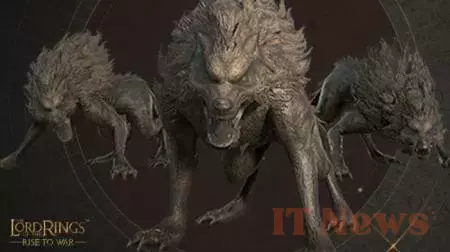
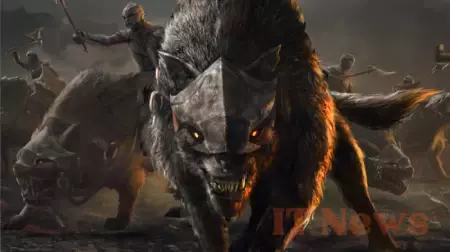
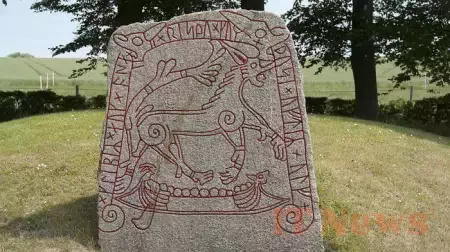
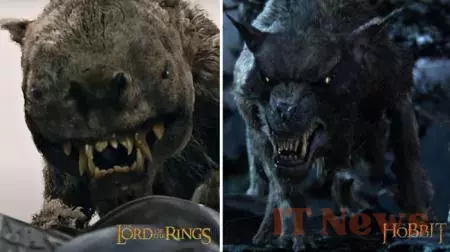
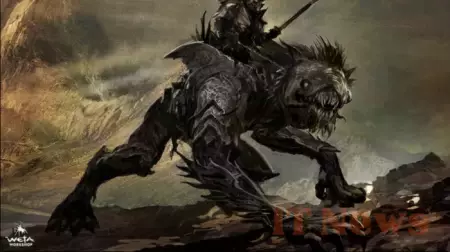

0 Comments